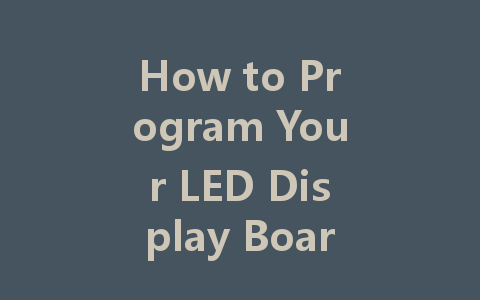
LED display boards are an excellent tool for communication, whether you’re using them for advertising, announcements, or information sharing. Programming these boards may seem daunting if you’re unfamiliar with the process, but it can be straightforward with the right guidance. This article will provide you with a step-by-step guide to programming your LED display board effectively.
Understanding Your LED Display Board
Before diving into the programming process, it’s essential to familiarize yourself with the components and features of your LED display board. Most boards come with:
Understanding these components will make programming your display board much easier.
Step 1: Gather Your Materials
For the programming task, you will need:
Having these materials ready ensures a smoother programming experience.
Step 2: Install the Control Software
Most LED display boards come with their dedicated control software. Here’s how to install it:
Having the software installed is crucial because it is the primary tool for manipulating what your LED display will showcase.
Step 3: Connect the LED Display Board
To establish a connection between your LED display and computer:
Once everything is connected properly, your LED display board should be recognized by the software.
Step 4: Create Your Content
With your LED display board connected to your computer and the control software open, it’s time to create the content you wish to display:
Ensure that the content aligns with your audience and enhances your message.
Step 5: Schedule Your Content
Depending on your needs, programming content to display at certain times can be straightforward:
This function allows you to automate the display, making it easier for you to manage ongoing communications or advertising campaigns.
Step 6: Preview and Test Your Content
Before finalizing everything, it’s wise to run a preview test:
Testing your content helps to eliminate errors that can affect viewer experience.
Step 7: Save and Upload Your Content
Once satisfied with the preview:
Confirm that the content uploads successfully by checking the display screen.
Conclusion
Programming your LED display board doesn’t have to be a complex or intimidating task. By following this step-by-step guide, you can create engaging content that effectively communicates with your audience. Remember, preparation and practice are key to mastering the process. With your newly programmed board, you’ll be well-equipped to showcase messages, promotions, and information in a visually appealing manner. Happy displaying!